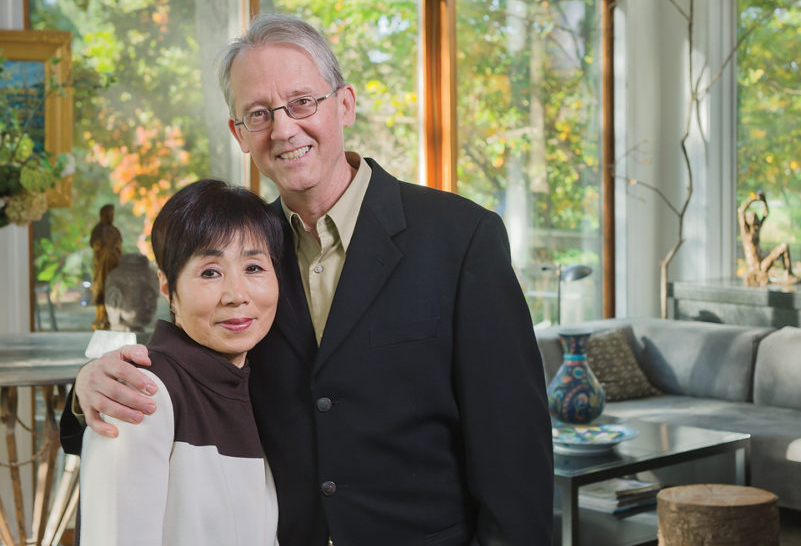Home & Living
Only the Sound of Strings
BSO cellist Chang Woo Lee finds sanctuary—and great acoustics—in her quiet, forested home.
“I tell you, it was totally liberating,” says Chang Woo Lee.
The Baltimore Symphony Orchestra associate principal cellist is talking about her move from a 6,026-square-foot house in Guilford to this much smaller 1,613-square-foot home in rural Glenwood in Howard County.
Although Lee describes the downsizing as a major undertaking—she and husband Kirk Laughton sold and donated a majority of their possessions, including a collection of Korean and Japanese antique furniture—she found it surprisingly easy to pare down their belongings to the essentials. “I’m not a sentimental person,” says Lee. “I can be very practical. I say, ‘These are things. I don’t have to keep everything.’”
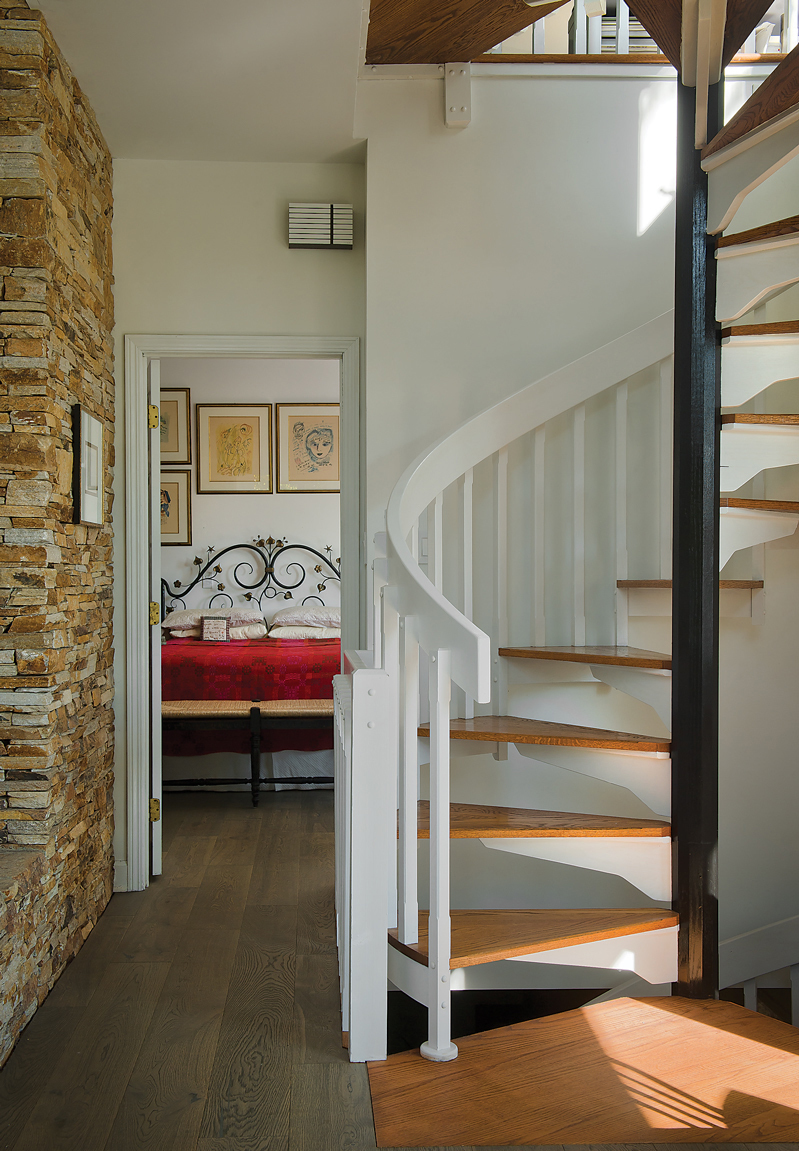
A sleek design is punctuated by eclectic pieces of art.

Even the bathroom merits art.
“This is the first major antique piece that we purchased, about 35 years ago,” Lee recalls, cradling a 17th century Korean vase in her hands. “It has a lot of character,” she says, running her thumb over brush strokes depicting a full moon. The couple picked up the piece on a trip to South Korea, where Lee was born and lived until she was offered a scholarship from the University of Indiana in 1970 to study with legendary cellist Janos Starker. Her family remains in Korea, save her three children and one nephew, who live in Ellicott City.
On the coffee table, a pair of vibrantly painted Iznik ceramics returned with the couple from a trip to Istanbul. A bronze sculpture of a female figure at rest by Baltimore artist and Maryland Institute College of Art alumnus Reuben Kramer was acquired to mark their 20th wedding anniversary.
“All our friends said, ‘You should go to Paris,’ and we thought maybe we might do that, but then we found this,” Lee recalls, eyeing the sculpture fondly.
But it’s the couple’s own art that reveals their eclectic spirit. In the master bedroom, alongside the functional mint- and black-colored cello cases, one case stands out. No, it’s no longer in use, but it has graduated to oeuvre d’art. It’s a heavy plywood case with every inch covered with photos of sultry models, clipped from the pages of Vogue magazine. “Isn’t that fun? My husband and I made that in 1984,” Lee says. “I put the sassiest one on the bottom,” says Laughton, pointing to a scantily clad woman in a black bustier, “so if you’re walking behind her as she carries the case, you see it.”
The decoupage creation stood out among the ubiquitous black cases of the day. “People who have been around long enough to remember ask me if I still have it. I’m going to auction it when I retire,” Lee jokes.

Nestled at the end of a long driveway, the first turn onto the property gives a taste of Lee’s design style, which she describes playfully as “easy modern living, with some funkiness.” Among the first things to greet you visually are the energetic lines of a bold, Alexander Calder-inspired metal sculpture installed on the front lawn.
From the outside, the home has the look of a modern cabin, with wood siding and three-sided deck helping it to blend into the trees. Despite the limited square footage, windows on three sides of the great room bring the outside in, with a sliding door leading to a spacious wooden deck that feels like a seamless extension of the living space. It’s the tall windows and vaulted ceilings of this wide-open room—which encompasses the kitchen, living, and dining areas—that sold Lee on the unique residence.
After cosmetic updates completed over the course of a few years (like replacing wall-to-wall carpeting with dark hardwood and painting over a “sunset in the South Sea”-style mural in the master bedroom), the home has come to feel like a sanctuary, Lee says.
In keeping with her modern and funky aesthetic, a sleek, clean design scheme is punctuated by eclectic pieces of art that survived the couple’s serious downsizing.

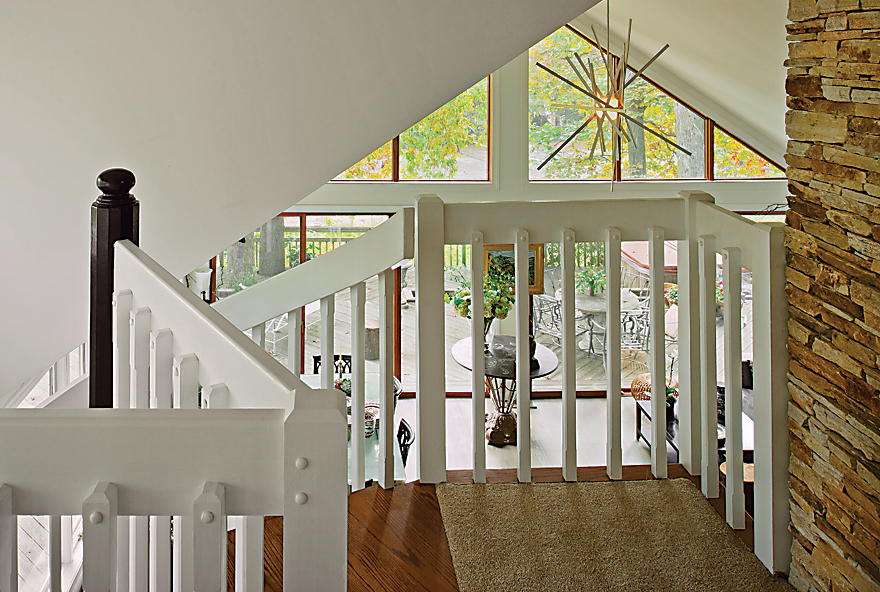

“This is the first major antique piece that we purchased, about 35 years ago,” Lee recalls, cradling a 17th century Korean vase in her hands. “It has a lot of character,” she says, running her thumb over brush strokes depicting a full moon. The couple picked up the piece on a trip to South Korea, where Lee was born and lived until she was offered a scholarship from the University of Indiana in 1970 to study with legendary cellist Janos Starker. Her family remains in Korea, save her three children and one nephew, who live in Ellicott City.
On the coffee table, a pair of vibrantly painted Iznik ceramics returned with the couple from a trip to Istanbul. A bronze sculpture of a female figure at rest by Baltimore artist and Maryland Institute College of Art alumnus Reuben Kramer was acquired to mark their 20th wedding anniversary.
“All our friends said, ‘You should go to Paris,’ and we thought maybe we might do that, but then we found this,” Lee recalls, eyeing the sculpture fondly.
Chang Woo Lee in 30 seconds
Grew up: South Korea
Age that she learned cello: 10 years old, which Lee describes as “kind of late.”
An accidental calling: Lee never thought she’d become a professional musician. “I never had that dream. It just happened, and I was very lucky.”
Getting noticed: Lee won her first competition in elementary school for her performance of a Boccherini cello concerto. After winning a national event in high school, she was discovered by cellist Janos Starker. He invited her to study with him at Indiana University on a full scholarship in 1970.
Career moves: She played with the Atlantic Symphony Orchestra and National Arts Center Orchestra in Canada before she joined the BSO in 1978. In 1982, she was named Musician of the Year in South Korea.
What’s next: As a private instructor, Lee works with musicians of all ages. But she especially enjoys her adult students. “It’s so different than teaching youngsters, because they’re so committed, and it’s their second—or more than second—career. They really do appreciate me, and I appreciate them. So I think I’ve found my career after my retirement, with a little bit of interior design.”
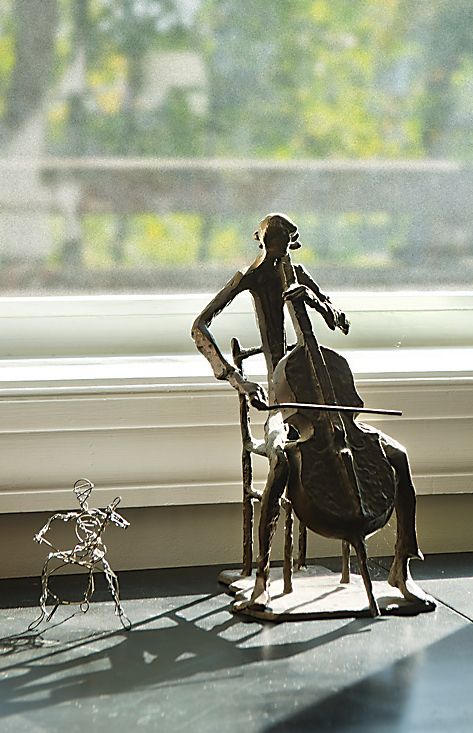
But it’s the couple’s own art that reveals their eclectic spirit. In the master bedroom, alongside the functional mint- and black-colored cello cases, one case stands out. No, it’s no longer in use, but it has graduated to oeuvre d’art. It’s a heavy plywood case with every inch covered with photos of sultry models, clipped from the pages of Vogue magazine. “Isn’t that fun? My husband and I made that in 1984,” Lee says. “I put the sassiest one on the bottom,” says Laughton, pointing to a scantily clad woman in a black bustier, “so if you’re walking behind her as she carries the case, you see it.”
The decoupage creation stood out among the ubiquitous black cases of the day. “People who have been around long enough to remember ask me if I still have it. I’m going to auction it when I retire,” Lee jokes.
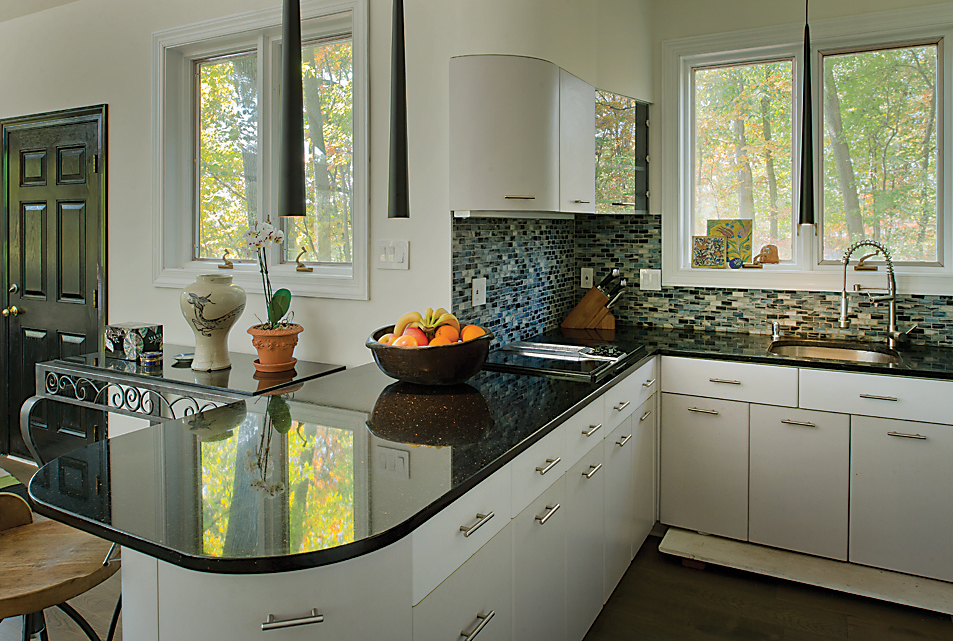
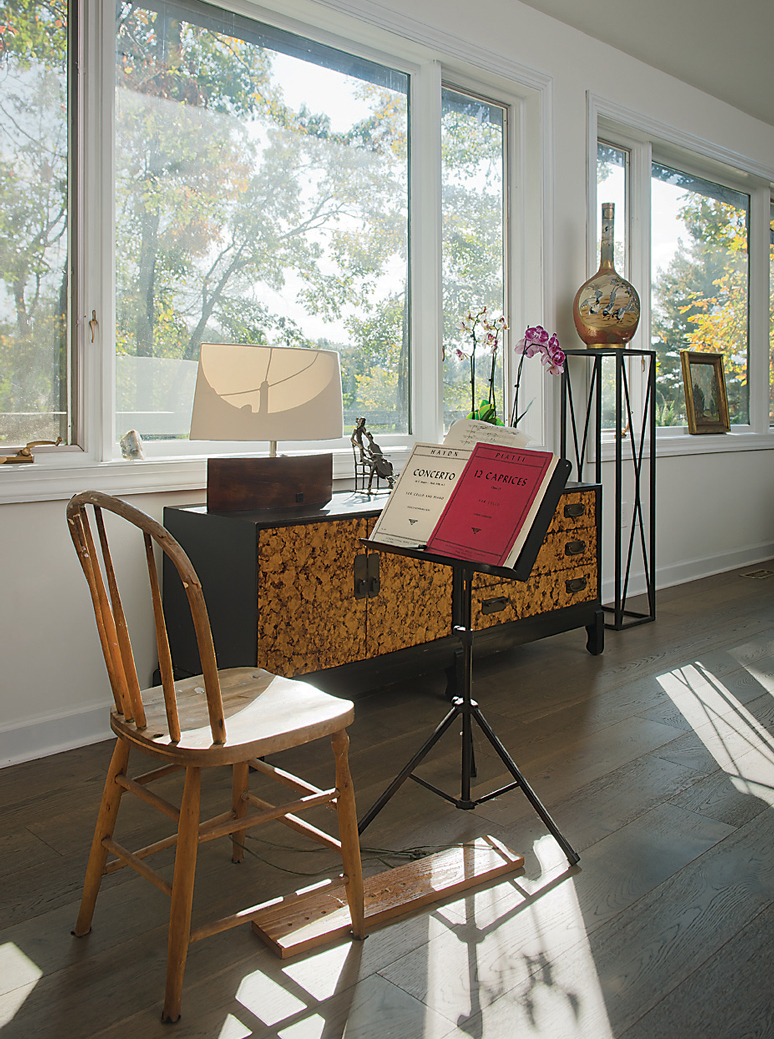
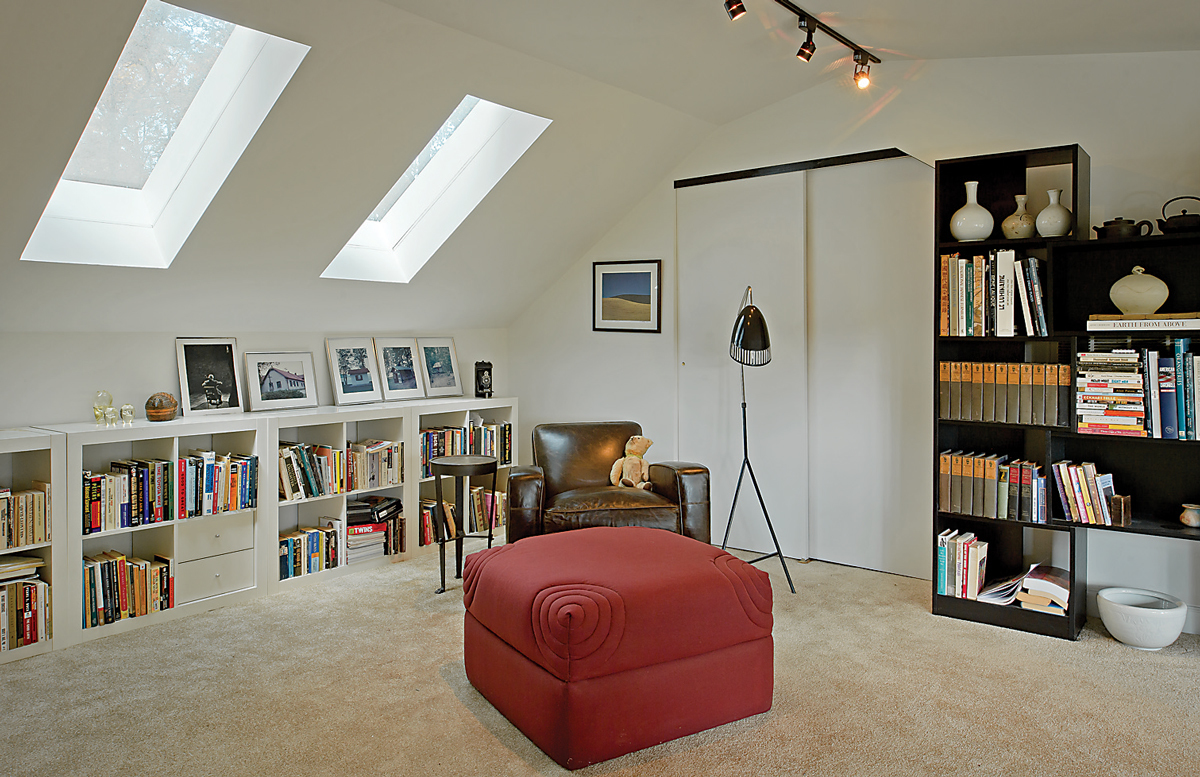
To Lee, the home will always be a work in progress. “Nothing is permanent for me,” she says. “The important thing is you keep editing.”
It’s not so different from her work as a musician. “When practicing, if I don’t like the way this sounds or I don’t like the phrasing, then I would have to come up with a new solution,” she says. “I would call that editing, as well, you see?”
For an accomplished musician who has performed as a soloist with orchestras around the world and coached many young cellists into professional careers, Lee’s home rehearsal space is humble. “I practice where that chair is,” she says, pointing to a simple, wooden chair and sheet-metal music stand in the corner of the great room. “I just love playing in this open space, and looking out the windows,” she says, comparing the acoustics here to a concert hall. “My dream is that someday I will invite all the cellists and we will have a cello ensemble here.”
